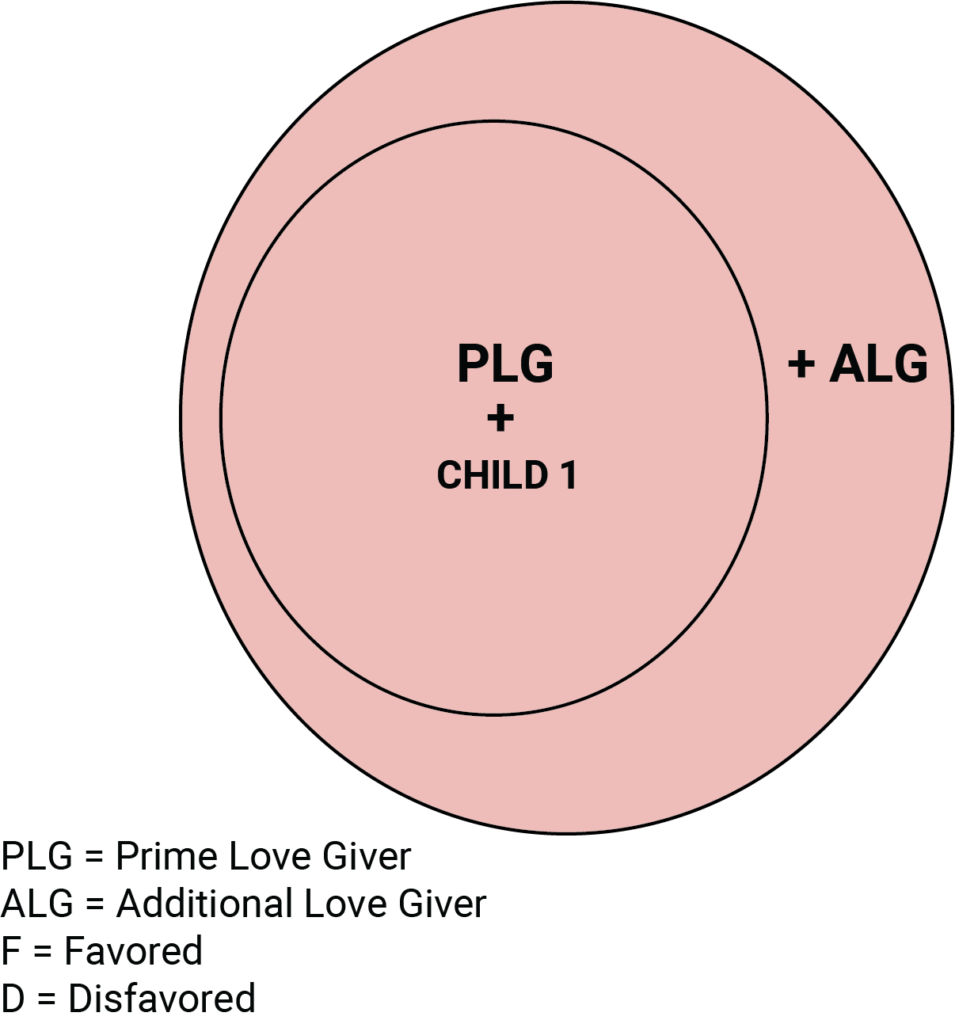As soon as a first child is born, a critical Emotional decision is made that is vital to children but difficult for adults to understand.
Parents divide into one who is MORE LOVING and one who is LESS LOVING.
Although unspoken and often vigorously denied, parental inequality is a fact of life. In the primitive domain called the Mind of a Child, two parents never carry the same Emotional meaning, and can never substitute for one another in the eyes and minds of their children.
So, within the first 3 to 6 months of a first child’s life, one parent emerges as more Emotionally receptive. This happens because every child is instinctively sensitive to the quantity and quality of LOVE that comes from one parent, as compared with the other. This difference is NOT merely a figment in the Mind of the Child, but rooted in the actual attitudes, actions and behaviors of the two new parents. In other words two parents do actually exude MORE and LESS of the precious commodity of LOVE that every child instinctively seeks, though this hidden Emotional dynamic seems strange to adults and has never before been uncovered through rigorous research.
In DOLIF Theory, which reflects the Emotional and Instinctual domain called the Mind of a Child, the warmer, more LOVING parent is called the Prime Love Giver, or PLG. The other parent, who is less Emotionally available, is called the Additional Love Giver, or ALG.
Gender is NOT important here, so that either a mother or a father can be a PLG or an ALG.
Acting on Emotion and Instinct alone, the first child and the more LOVING parent, or PLG, are drawn together like magnets and become permanently Emotionally attached. This begins the DOLIF formula that is based on the Distribution Of the precious commodity of Love in every Family.
As illustrated below, we can imagine an Inner Circle of Love that is created consisting of the PLG and first child. At the same time, an Outer Circle of Love is created that includes the Additional parent and envelops the whole family:

The ALG is a very different kind of parent in character and temperament, and has a completely different style of parenting. This Additional parent can either be (a) more organized, disciplinarian, socially conscientious and driven by reality, or (b) more detached, inaccessible and distant.
To understand this division, think about the PLG and ALG in your own Family of Origin with your parents and siblings, or as an adult yourself in your Family of Procreation with your spouse and children. Was your mother or father the more attachable, LOVE-providing parent? On what Emotional basis is this division taking shape in your mind and heart? You might easily assume that the more Loving parent was your mother because of the female functions of childbirth and breastfeeding. Yet as you search your soul, you may soon discover that your father was more LOVING. And if you have a Family of Procreation, think about whether you or your spouse is the PLG with the more easy-going, tolerant personality, and the greater Emotional attraction for your children. If you fail, try again later or ask your siblings, partner, relatives or friends for help. Observation and experience generally indicate that the chance that either a mother figure or a father figure is the PLG or ALG in a family is about 50-50.
The ALG supplies 3 vital feelings to the family atmosphere: Support, Stability and Security. Like the invisible fog of LOVE that emanates from the PLG, these three feelings silently flow out and infiltrate the family unit. The ALG creates an Outer Circle of Love that has the critical psychological function of binding the family members together and drawing the children into the family fold. This Outer Circle provides a group feeling that gives a sense of adhesion and personal pride to each member. It is an elusive feeling of social acceptance and comfort that we commonly refer to as a sense of “belonging“. It is the secret ingredient that prevents children from becoming defiant or showing ANGER and ANXIETY-based reactions toward their family and the broader society through behaviors such as rebellion, alienation, substance abuse, non-conformism, joining gangs, or criminality. Alternatively if the ALG is missing, manipulative or hostile toward the children, they may show DEPRESSION and ANXIETY-based behavior that is expressive of ANGER turned inward, such as lack of motivation, mental disorders or social withdrawal. (Continued in Phase 2)
